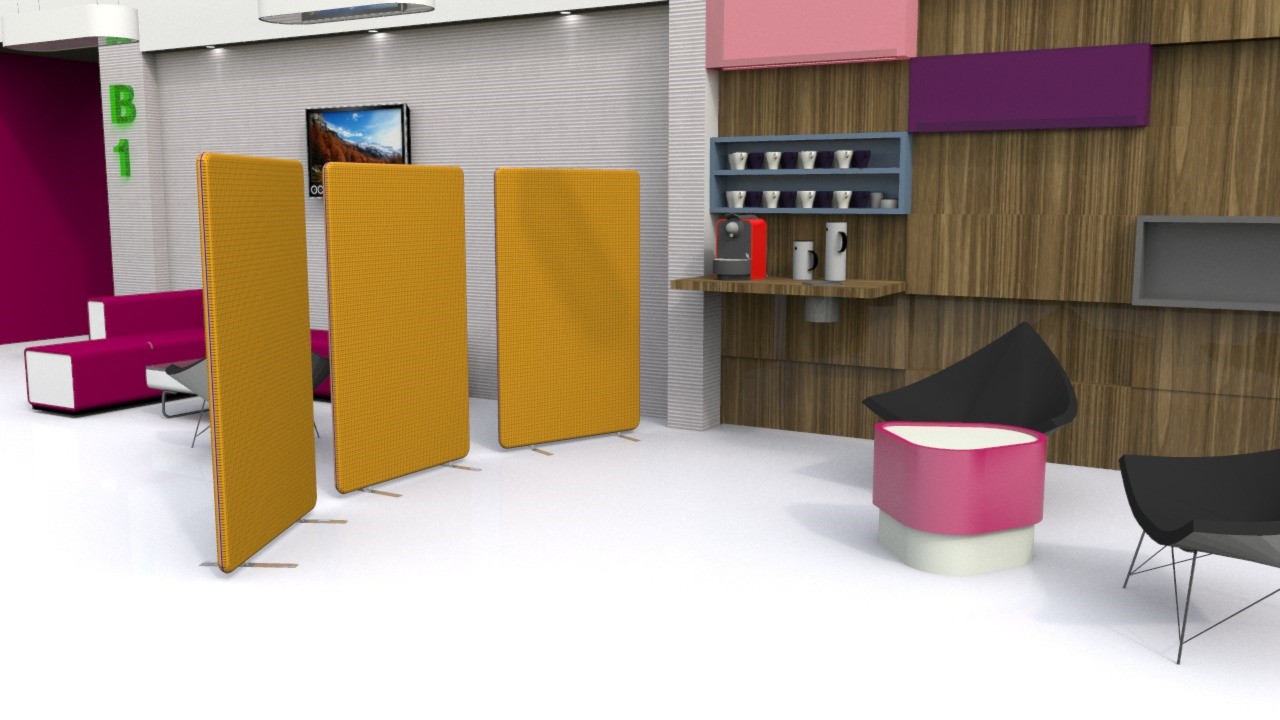As the popularity of an open plan office continues to grow, there are a variety of practical issues which many businesses neglect when beginning to design the office layout. Factors such as colour choices and acoustic control have a significant impact on the productivity of staff, despite the effects not being immediately obvious. Office design needs to create a comfortable environment which helps people to concentrate and while huge rooms with clean white walls and amazing hardwood floors look great, they are a horrible space to work in. In particular, when deadlines loom, the constant clacking of that beautiful oak floor can become unsurprisingly infuriating.
Many interior designers will now advise you based on acoustic as well as aesthetic design, but if you don’t have the budget to commission one, then it’s important to take note. While the overall look of your office has obvious benefits, it is the practical elements which need to be at the heart of the design. If you choose to have an open office layout, then you will be hoping to work towards a dynamic environment which allows relationships to flourish and creativity to flow. However, no team is perfect and over time as staff continue to work in the same space, gripes can begin to emerge and the environment which began as a great collaborative workspace can transform into a room full of tension.
One major element which contributes to this is sound, whether it is in conversations from across the room, phones ringing throughout the day or even just the sound of footsteps walking past you, these can all destroy your focus and concentration. To remedy this, many office designs now incorporate acoustic foam as well as more heavy duty materials which are tasked with absorbing ambient noise. A common misconception with acoustic foam is that it will be able to block out sound altogether, however, due to the way that soundwaves work, this would take such a meticulous and expensive design that you would probably be better off having multiple private offices.
Sound feels quite linear as our ears seemingly instantly detect the sound. However, the source of where that comes from is the result of vibrations causing the sound wave to go from the original source to our ear drum. For example, when someone is speaking to you, the sound causes vibrations in the air which bounce all around you. To interpret these, when the sound waves reach our ear drums, they cause them to vibrate. Initially these would be unintelligible such as if someone was trying to speak to you from far away. However, the louder the person speaks, the greater the vibrations are on the ear drum, which the brain can then interpret to understand the meaning.
So basically, as long as the sound is loud enough to cause our ear drums to vibrate, our brain instinctively begins to decipher the sound. For our ancestors, this would be fantastic as a warning system for oncoming predators. However, in an open office environment, it means that heated conversations, phones ringing and shoes stomping, all cause us to lose concentration. The reason that we don’t pick up absolutely every sound is because as the sound wave bounds off in every direction, they lose energy rapidly and once this runs out, the sound dissipates.
This is why it is crucial to integrate acoustic control into the office design, as while you will never be able to block out sound altogether, you can create an environment which helps to dissipate soundwaves and help people to concentrate. Simple additions such as carpets are great for absorbing noise, but more advanced solutions such as acoustic screens are fantastic at stopping the sound at the source. Here at Rap Industries, we have developed the Delta Acoustic Screens for this very purpose. Featuring a vibrant and modern design which is combined with innovate acoustic foam, these provide a very effective way of absorbing ambient noise in the office.
If you would like to know more about how Delta Acoustic Screens can help your open office environment, then please feel free to get in touch by calling 01733 394941 or by sending an e-mail to sales@rapind.com.
